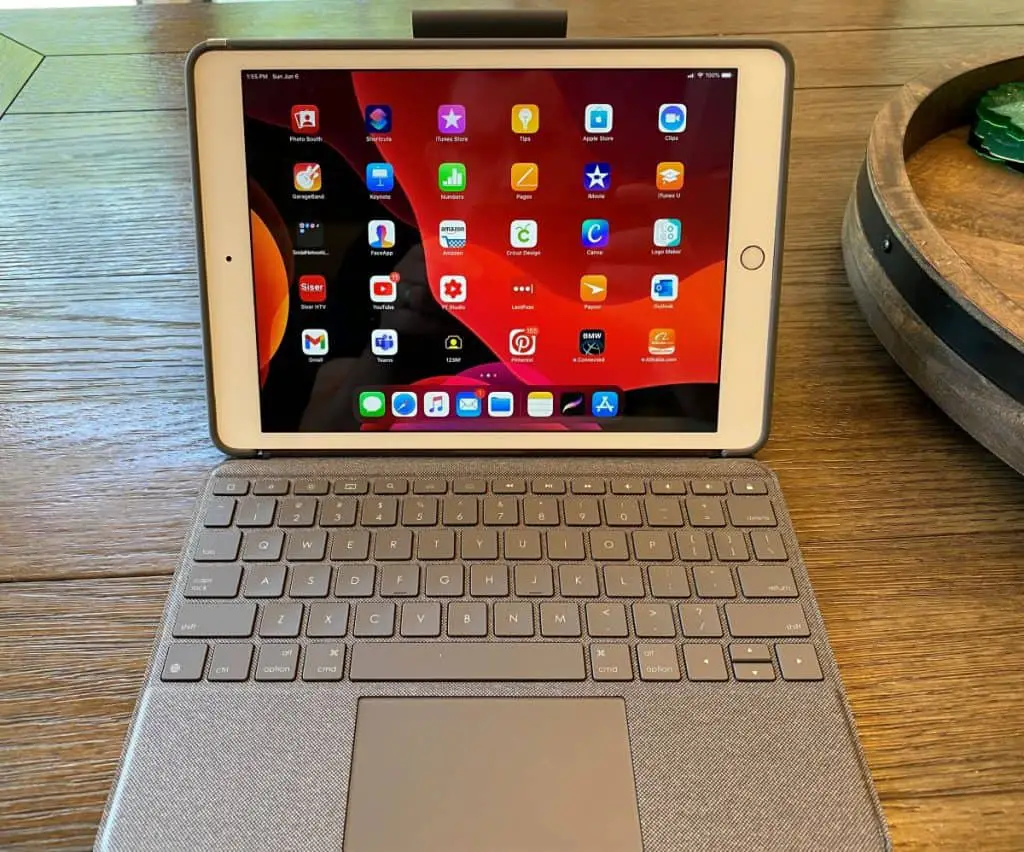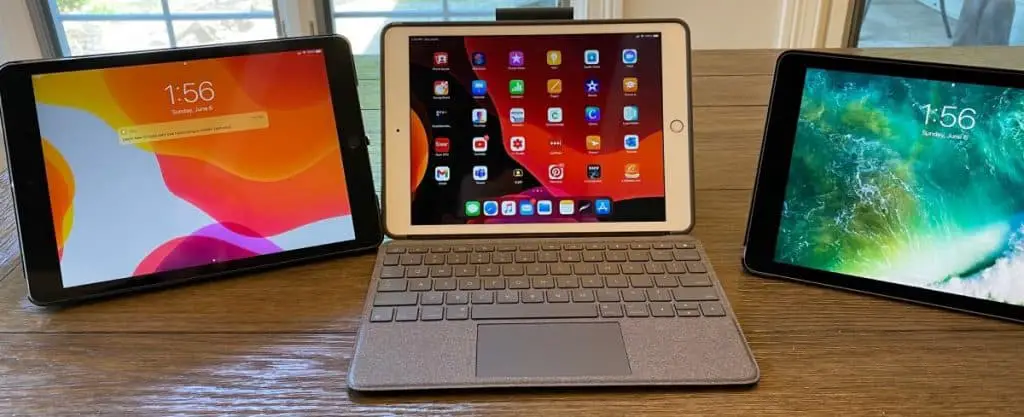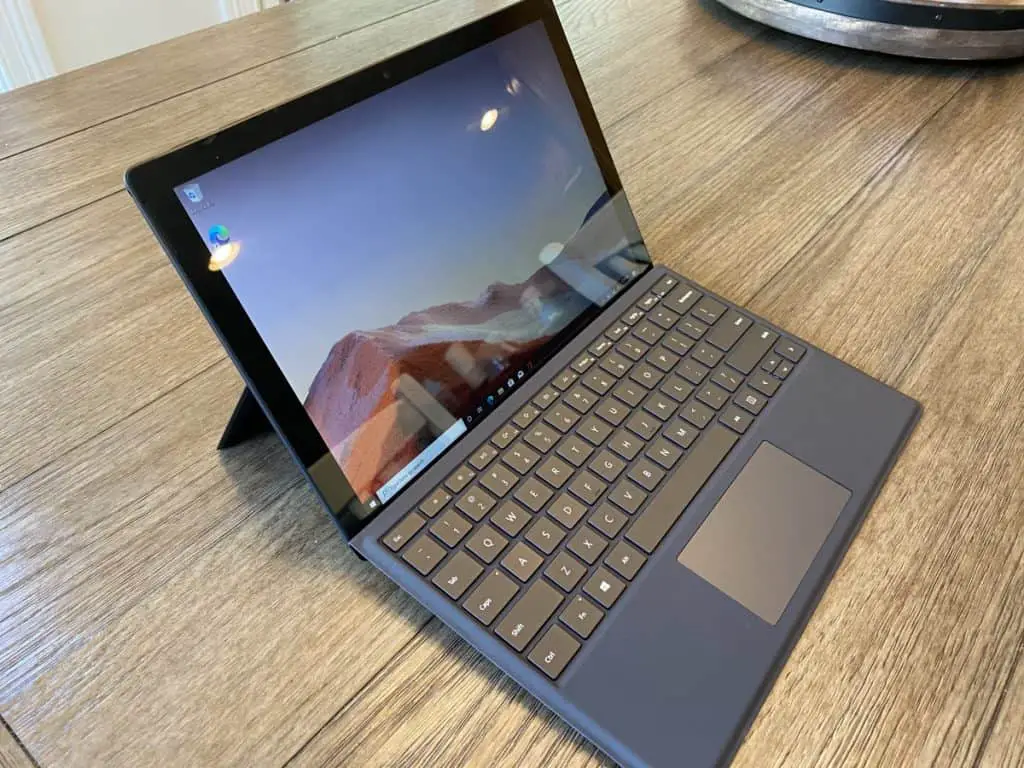Everyone assumes that a laptop or PC is necessary for coding. They wait until they can buy one to start without considering all of their options. This raises the question – can you code using a tablet instead of a laptop?
A tablet can replace a laptop for coding. Beginners can learn to code using a tablet on programs like CodePen and CodeSandbox. However, a tablet on its own is not convenient for coding, and you might need extra hardware. Hence, a laptop is an ideal device for coding.
This article will cover the pros and cons of using a laptop compared to a tablet for coding. If you want to code and are wondering whether to start doing so using a tablet, this article will help you decide.

Is a Tablet Better Than a Laptop for Coding?
A tablet is not better than a laptop for coding. Many of a laptop’s features, including powerful processors and an ergonomic design, make it ideal for coding. However, a tablet can still be used for coding.
Read on to learn about the pros and cons of using a laptop for coding.
Pros and Cons of Using a Laptop for Coding
If you’re going to code, the ideal scenario is for you to use a laptop to do it. Let’s discuss the upsides and downsides of coding on a laptop:
Pros
- Laptops incorporate powerful processors. They also have built-in fans that keep the laptop from overheating. Basically, laptops are built for multitasking, which is pretty essential for coders.
- Laptops have optimal memory units. With a laptop, you’re not likely to have storage issues. If you do, expanding the storage capacity is relatively easy.
- Laptops have attached physical keyboards. With a keyboard, typing your code is pretty ergonomic.
- Laptops have trackpads or mousepads. These make navigation on the laptop easier.
- Laptops generally have a bigger screen than a tablet. Screen size will ultimately come down to the specific laptop you own or buy. Still, visibility for coders isn’t an issue with laptops.
Cons
- Laptops are bulkier and bigger than tablets. Their size makes them difficult to carry around. Additionally, you’ll need a good backpack or high-quality laptop bag to best protect the device.
- Laptops are much more expensive than tablets. This is a result of their high-quality build and hardware.
- Laptop operating systems are prone to cybersecurity attacks. A laptop is susceptible to viruses or malware, so you’ll have to invest in a good antivirus.
- Programmers eventually need bigger screens and faster hardware for their work. Usually, they end up purchasing a monitor and a Bluetooth mouse.

Pros and Cons of Using a Tablet for Coding
It is possible to code on a tablet. However, a tablet isn’t necessarily the ideal device for coding. Let’s discuss some pros and cons of using a tablet for coding:
Pros
- Tablets are thin, lightweight, and highly portable. You can easily carry them in your pocket or bag. Their portability is well-suited for practicing coding in your classes.
- Tablets have smaller screens and less hardware. This means they have much better battery lives than laptops. This factor can be beneficial for some people.
- You can get a fully functional tablet at a lower price than a laptop. Check out some of the best tablets for coding to make your choice.
- Tablets have closed operating systems. As a result, they’re less vulnerable to cybersecurity attacks compared to laptops. With this in mind, your data may be safer on a tablet than on a laptop.
Cons
- Tablets have solid-state devices (SSDs) for storage. These are fast but do not provide sufficient memory capacity. You can connect external hard disks to some tablets, but the process for that is more complex than for a laptop.
- Tablets come with touch screen keyboards that cover half the screen. This makes the device highly inconvenient for coding because full-screen visibility is optimal for programmers. You can invest in a Bluetooth keyboard, but those tend to be slow and bulky.

Best Platforms for Coding on a Tablet
If you don’t have a choice aside from a tablet but want to learn to code anyway, I’d advise you to go for it! Luckily, there are plenty of great platforms at your disposal, so learning to code is easier than ever! Here are some websites you can start coding on right away:
CodePen
CodePen is ideal for beginners to start learning to code. The user-friendly interface is incredible for learning frontend design and web development because it focuses on HTML, CSS, and JavaScript.
This web application allows you to sign in with your GitHub account, which is easy to create. Since the application works on a browser, you can easily use it to learn to code on your tablet.
CodePen has a sizable community, so you’ll have plenty of support while learning. If you dig into the settings, you’ll also find an auto-complete feature, making your experience comparable to that of a proper code editor. Best of all, the website is free to use!
CodeSandbox
CodeSandbox is another excellent browser integrated development environment (IDE) to learn to code and build prototypes. It’s quite similar to Visual Studio Code.
CodeSandbox will help you take a step further. Apart from basic HTML, CSS and JS, it also utilizes React, TypeScript, VueJS, and Angular. This web application has you covered on any framework or library based on HTML, CSS, JavaScript, and TypeScript you wish to work on.
You can connect your account to GitHub, so your code is always backed up. CodeSandbox is also free to use!
CodeAnyWhere
CodeAnyWhere has lots of uses, particularly because it supports over 75 languages! These include many backend languages, including:
- Python
- Ruby
- PHP
- Node.js
You’ll find that the editor works smoothly on a tablet. You can write code on the editor and run it on the terminal. Later, you can also deploy it on a server. How neat is that!
You can also edit settings according to your preferences and even change the color scheme. The web application allows you to share your work with other developers as well.
One downside is that CodeAnyWhere only offers a 7-day free trial. Once the trial ends, you’ll have to buy a subscription to continue using the application. However, the pricing is pretty economical, and you have the option to team up with other people and purchase a plan together.
Coding on a Tablet vs. a Laptop: The Final Verdict
A laptop is an ideal device for coding in more than one way. However, if you don’t have access to one, don’t be discouraged. You can go ahead and learn to code on your tablet instead of waiting for a laptop. This is especially convenient for beginners because there are many platforms to learn from!
Fortunately, you’ll also find plenty of guides to help you at every step. This article has some tips and tricks for coding on an Android tablet. If you’re interested in making websites, learn how to turn your Android tablet into a web development environment.
Conclusion
Is a laptop the ideal choice for coding? Definitely. Does that mean you can’t code on a tablet? Not at all! Get started anyway and invest in hardware or a laptop as you progress in the coding world. Remember, there are no restrictions to learning!
